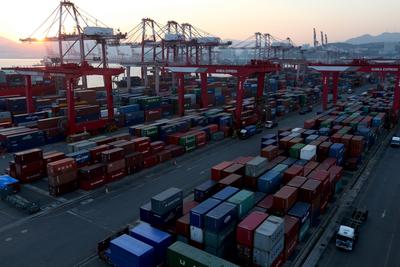As of January 2014, South Korea had implemented FTAs with 46 countries and had two more deals awaiting implementation. Also, the South Korean government was negotiating FTAs with a further 15 partners and considering opening negotiations with 20 more. Having come to the FTA party relatively late — its first free trade deal was implemented just ten years ago — South Korea has been making up for lost time by pursuing a multi-track FTA policy: simultaneously negotiating a range of comprehensive deals covering areas as diverse as trade, investment, procurement, standards and services.
The European Commission’s second annual report on the implementation of the EU–South Korea FTA, published in February 2014, showed that EU exports of goods to South Korea had risen by 15 per cent in the first year of implementation and by 8 per cent in the second. This was notably faster than shipments to the rest of the world, which had increased by 17 per cent in the same period. The report also noted that in 2012 the EU had recorded its first trade surplus with South Korea in more than 15 years.
South Korean exports to the EU, however, had actually fallen.
The fall in South Korean exports to the EU occurred at a time when the country’s exports to the rest of the world were increasing. Statistics published by the Korea Institute for International Economic Policy also confirmed that there had been a two-year increase in imports from the EU. Furthermore, during the first two years of implementation, inward investment from the EU declined by 0.9 per cent in contrast to sizeable increases in investment from the United States of 83 per cent and Japan of 39 per cent.
There were four main reasons for South Korea’s weak export performance and the increase in EU imports.
First was the financial crisis and resulting economic stagnation in Europe (which were also cited as the key reasons for the fall in inward investment). Second, the relocation of production bases to central and eastern Europe by major South Korean car and electronics firms seeking to gain access to lower production costs and local markets. Third, public procurement opportunities for EU firms created by a number of major government-driven initiatives in South Korea — such as the US$38 billion ‘New Green Deal’ environmental project which aimed to attract investment and boost economic growth. Fourth, the further deregulation of the South Korean service sector.
The relocation of South Korean electronics production facilities to Southeast Asia (rather than the EU) and global overcapacity and oversupply in the shipping industry were additional factors in the decline in South Korean exports to the EU. The South Korean reaction to the poor trade figures was unsurprisingly pessimistic, with critics seeing the deal as far more beneficial for the EU than South Korea and warning that certain foreign industries could cripple the domestic market.
In assessing the impact of its FTA with the EU, South Korea must look beyond the results of the first two years of its implementation. South Korea must resist the temptation to extrapolate short-term disappointment into doubts about the long-term benefits of free trade with a major partner.
It is also important for South Korea to distinguish between global factors over which South Korea and the EU had no control — such as the 2008 financial crisis and its impact on European exporters and investors — and the outcome of corporate and government strategies at home. These include the relocation of production facilities and the promotion of domestic policies that boost growth but also increase the participation of foreign firms in the local economy.
Many of the positive results of these trade deals are long term. Those concerned about the value of the FTA with the EU have to bear in mind the rationale behind South Korea’s FTA policy: the need to be included in the network of regional trade deals; to secure export markets and gain access to natural resources; to raise productivity through competition; to increase market efficiency through liberalisation and the application of global standards; and to promote inward investment.
The benefits of the FTA may not be immediately visible or quantifiable but increased trade and investment will have a beneficial impact on a wide range of domestic supply and support businesses. Inward investment will also provide access to capital, technology, skills and know-how, while encouraging competition and creating opportunities for South Korean firms to work with and learn from their EU counterparts.
The lesson for South Korea — and for other nations embarking on similar agreements — is that, if early results are less than expected or hoped for, persist and look for benefits in the long term.
Dr Judith Cherry is a lecturer in Korean Studies at the School of East Asian Studies, the University of Sheffield.

